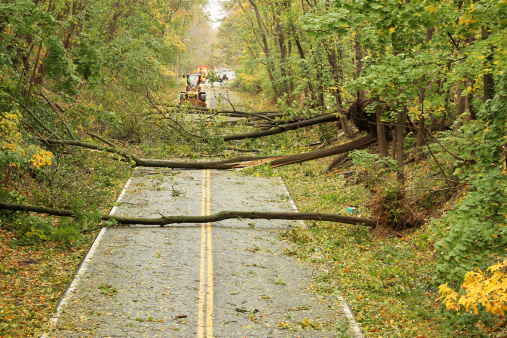As your trusted IT service provider, we are available to provide any Business Continuity support needed by companies affected by the heavy rains and power outages across the northeast.

The latest tropical storm to hit the US — known as tropical storm Phillippe — caused heavy rainfall and brought down power lines across the Northeast before dissipating on the night of October 29th, 2017. Marking the five-year anniversary of Superstorm Sandy, Philippe may not have caused as much damage, but has still left more than a million residents across New England, New York, and New Jersey without electricity.
If your business is one of those affected by Philippe’s wind and rain, PNJ Technology Partners is offering any and all assistance needed to get your business back up and running, as well as ensure that you can stay in operation when the next tropical storm hits. Our team of Business Continuity experts can help you develop and implement a comprehensive strategy to make sure your business can survive downed power lines, flooded basements, and other affects of severe weather.
So what does effective Business Continuity strategy really mean for a business like yours? While many assume that a simple data backup solution is sufficient, the reality is that true Business Continuity means planning to keep your business operating, no matter what. Key steps include:
Developing a Plan
As with most endeavors, the first step is to create a workable plan. Your business’ hurricane or disaster plan should be carefully constructed and written down for reference and review. Remember, many companies are required to maintain an Emergency Action Plan by OSHA, so this can be considered part of that process.
Your plan should put forth policies and procedures regarding employee safety and the contingencies discussed below that can be activated if your business’ encounters an emergency situation.
Defining Procedures and Assigning Roles
Determine the critical staff that will need to be on-site or on-call during an emergency. It’s important to define who will be needed to keep your business running, and who should be responsible for any emergency response tasks. Remember that safety comes first, and that your plan must focus on keeping your employees out of danger.
Implementing Key Solutions
A vital part of Business Continuity planning is ensuring you have a contingency for any damage a severe storm can cause. These solutions include:
- A backup generator to maintain local power during a major outage, as well as a redundant power system to provide any onsite servers with an uninterruptible power supply.
- An up to date and automated Data Backup solution, paired with a File Recovery solution to handle any data lost in the short time span since your latest backup.
- Remote Access capability so that if employees can’t make it to the office due to the weather, they can still keep in touch and handle important company business.
Coordination
A comprehensive plan should prepare your business to coordinate with others during an emergency. How are nearby businesses going to operate during a hurricane? How will police, fire, and medical response be affected? These questions are best answered before the storm hits.
Briefing Your Employees
Your Business Continuity plan should not be written and then left on a shelf. Every employee should be familiar with your procedures and plans in order to handle any future emergencies. Hold a meeting where your plan is reviewed, roles are assigned, and your staff can ask questions.
Reviewing, Testing and Updating Your Plans Regularly
Changes in your business or the community in which you operate can have a major effect on your disaster plan. Be sure to review your plan more than once a year (ideally before and after hurricane season) and make any necessary revisions to keep it current and effective.
Effective Business Continuity services keep you safe no matter the emergency, simple as that. Proper Business Continuity strategy should assess your individual requirements by estimating your current needs immediately after a storm has hit, as well as any expected changes in the period before you review it again. You can then determine what systems are critical to your business and assess what recovery mechanisms are currently in place. Based on this comprehensive analysis, you’re then able to build a Business Continuity plan with solutions that work best for your organization.
The good news is that you don’t have to handle all this on your own – PNJ Technology Partners is here to help. The question is: will you wait until after you lose power from the next tropical storm, or worse before you start thinking about how you’ll recover? Or will you do what’s right for your business, and start planning for the worst-case scenario today?
For more information about how PNJ Technology Partners can support your Business Continuity planning, you can get in touch with us right away at (518) 459-6712 or info@pnjtechpartners.com.

